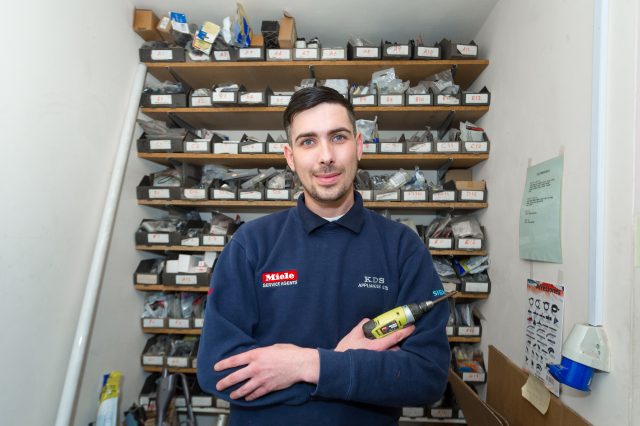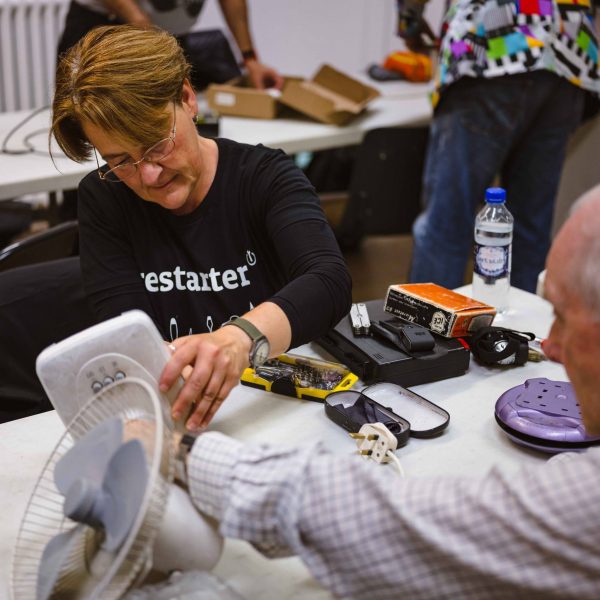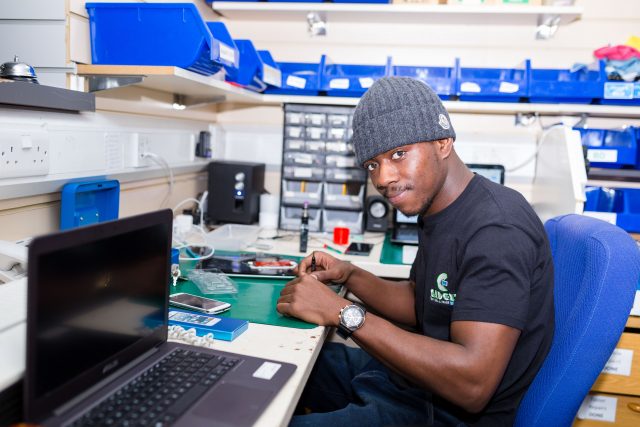
A climate emergency has been all over the news in the UK recently. From Sir David Attenborough taking a big stand on the climate, to Greta Thunberg’s visit to Parliament, to Extinction Rebellion’s protests. The zeitgeist is clearly shifting — and quicker than anybody imagined.
With the latest policy discussion on the “net zero” UK targets, we feel the need to contribute to the conversation about a whole economy shift to a green economy, including the repair economy, where industrial and environmental strategy finally merge. (After all, repair and reuse jobs are the original “green jobs”.)
Net zero emissions: what about consumption?
According to the Committee on Climate Change (CCC) latest report ‘Net Zero – The UK’s contribution to stopping global warming’, the UK could reach net zero carbon emissions by 2050. This target focuses on territorial emissions, that is, the emissions produced in the UK.
But what about consumption emissions? The UK imports considerable greenhouse gases emissions through the consumption of goods and services, however there are no legislated targets to limit these.

Many of these imported goods have really short lifespans, and some end up at our community repair events where we try to extend their lives. And around 80% of a small electronic device’s carbon footprint — over the whole of its lifecycle — is emitted before it even reaches UK shores.
We need to reduce consumption emissions as well, not just focus wholly on territorial emissions. While the high consumption-based emissions of the UK are highlighted in the CCC report, there is no clear strategy for how — and by how much — the UK should reduce them.
The CCC hints that people in households can use products for longer, and fix them.
But what if, even with the best intentions in the world, we can’t use stuff for longer by fixing it? What if we don’t have access to spare parts, repair documentation, and what if these products are impossible to repair — by design?

We are trying at the grassroots. We’re innovating in providing repairs for products where there is no longer any viable commercial model. (Just like the people who invented recycling — they did it at the grassroots and governments followed.)
But it’s not enough to ask individuals to change when the systems themselves are hostile to these changes, and not supporting any move to scale. That’s why 36 community repair groups have signed the Manchester Declaration, as well as ally organisations such as Friends of the Earth, Greenpeace UK, Green Alliance and NEF. It calls for policymakers
to stand with us for our Right to Repair, by making repair more accessible and affordable, and ensuring that we adopt product standards making products better supported, well documented and easier to repair by design
The shift towards a greener economy and society
The repair economy can be a large part of this “community and employee-led transition from high carbon to low and zero-carbon industry”. This language comes from a radical, and intentionally vague Bill with cross-party support, which has been dubbed the UK’s Green New Deal.
We like the boldness of the vision introduced in late March, and its authors will be looking to add detail, to fuel debate. In terms of green jobs, we often hear a focus in the media on construction-related jobs from retrofits, solar panels and the electric grid. We often hear less about the original “green” jobs, those that help the UK take better care of resources — like reuse, remanufacture and repair.
Our vision is of a local and regional-led revival of these sectors, that is not run by massive waste companies, or Amazon and the companies that currently dominate.
According to compelling research on UK manufacturing and its future prospects by “The Next Manufacturing Revolution”, one of the top three “opportunities to capture significant value from circular resource use” is electrical and electronics. The report lists some key barriers to this revival of remanufacture: senior leadership, information, skills, design, infrastructure, legal constraints and collaboration.
These barriers map very closely to the barriers communities face. We lack repair information, design for repair and reuse, and companies are creating legal constraints to reuse and repair. Skills are dwindling as design and technology and hands-on STEM education is being side-lined, as low status or impossible to assess at scale.
These are system-level barriers which require system-level responses.
Ever since we started hosting free community events to share repair skills in 2012, we have believed that community-led action on resources can boost the commercial sector and vice versa. In fact, at our first event, we set out to collaboratively map trusted, local repair businesses and give them visibility.
There is no zero sum — we can, and we must, lift each other up.
Regional, local and social dimensions
There is everything to win, not just for the planet but for a fairer and more just economy.
Green Alliance reminded us in their briefing on reaching net-zero that improvements in resource efficiency in manufacturing and industry — including remanufacture, reuse and repair — would particularly benefit those areas with below-average productivity.
While in the US, the Right to Repair movement has agriculture (and the tractor) as its starting point, perhaps we need a revitalised industrial sector with remanufacture, reuse and repair as ours.
Now some global companies are shifting towards repair and reuse, but many want a system where they increase control over the whole lifecycle of their products. There is a large amount of delusion in this vision. If you live in the Scottish Highlands, can you rely on Apple to fix your mobile for you? Can you wait weeks to send it off?
The sheer amount of products released into the world require a whole ecosystem that allows people to take care of them. In our vision, small businesses flourish again, because they have access to information, spare parts, skills, and products are better designed for repair. Products are resold after refurbishment or remanufacture, and the bonds between neighbours are renewed through this business. (In some places, and some sub-sectors, businesses and social enterprises may need an extra boost, with additional fiscal incentives for repairs.)

To feel the importance of small repair businesses, you just need to visit one. If you need one, we’ve mapped 100 reliable businesses in 11 London boroughs. When we profiled some top East London repair businesses recently, a common theme arose. These businesses thrive through their personal relationships with customers and a kind of trust that is difficult to build over distance.
However, the reinvigoration of remanufacture and refurbishing sectors may also take on more regional dimensions, as alluded to above by Green Alliance. Some of our favourite indie repair businesses already have a regional reach.
We need our own UK version of the Green New Deal, that does not treat remanufacture, reuse and repair as footnotes, one that breathes new life into these original “green jobs” and recognises their profound social value.
Our current work advising London Waste and Recycling Board on their approach to a “circular economy” for electricals highlights great opportunities learning from what works elsewhere. Watch this space for more on this work in coming weeks.


[…] (2019) Taking care of resources in fair, net-zero economy. Restart 10 […]